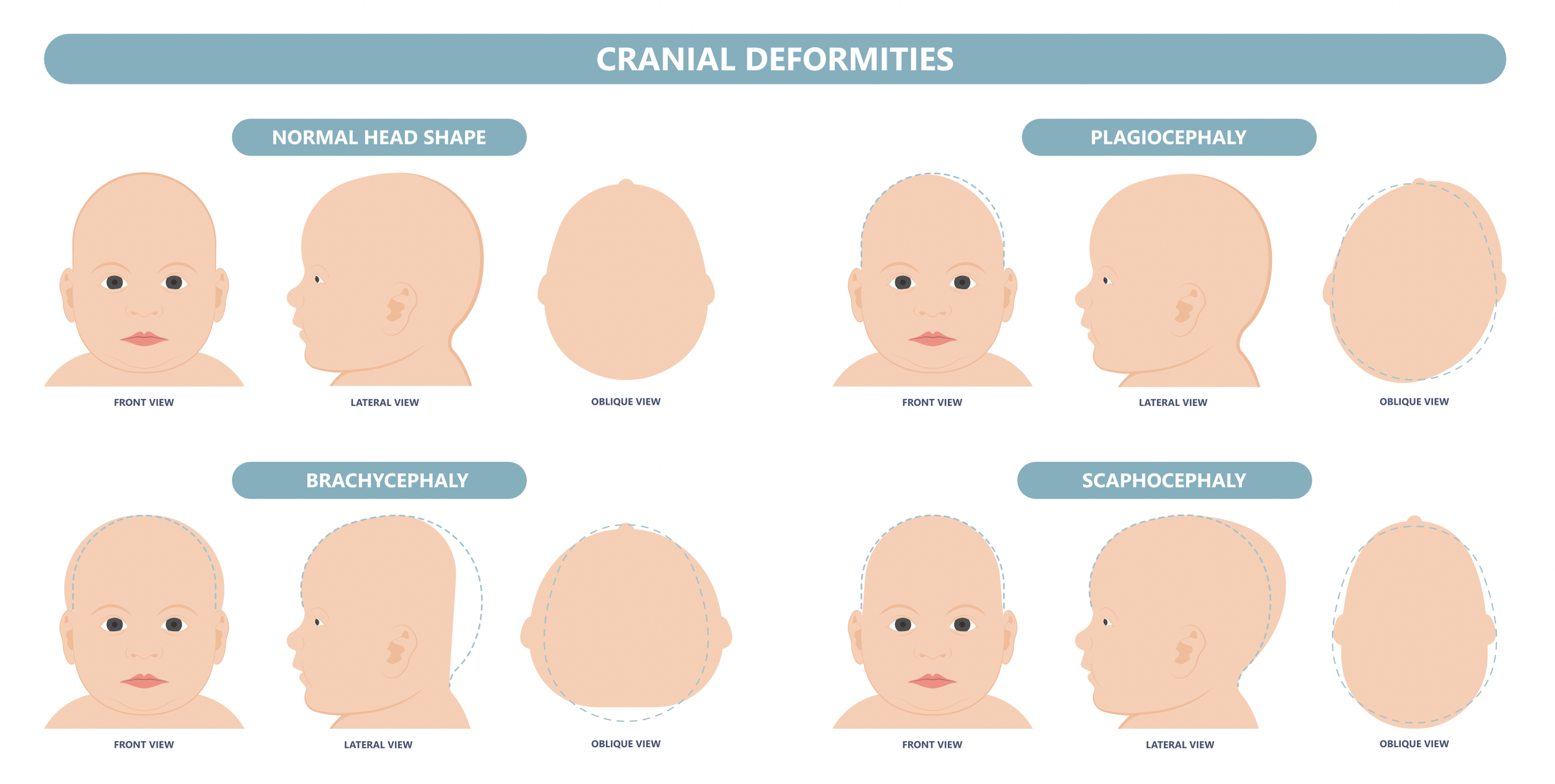Let's talk head shape
You may have noticed that your baby’s head is not symmetrical and is looking a little flat. Particularly during the first 12 months of life a baby's skull is soft and moldable. This is because the bones are not fused together to allow for the rapid growth that is occurring. However, if your baby likes to spend a lot of time looking one way, this may result in a flat spot.
There are two common types of flat head shapes;
Plagiocephaly: The head is flattened on one side causing it to look misshapen. One ear might be further forward than the other and the forehead can also look asymmetrical. This could be as a result of torticollis (asymmetrical tightness in the neck muscles).
Brachycephaly: The back of the head becomes flattened, causing the head to widen.
It is common for children to have some degree of flattening due to the ‘back to sleep campaign.’ This was in response to evidence that stomach sleeping may contribute to SIDS (Sudden Infant Death Syndrome). It is recommended that all healthy babies be placed on their back to sleep. Even if your child does have a flat spot you should continue to ensure they sleep on their back.
What should you do:
Early intervention is always better and before 4 months old is ideal. Physiotherapy guided strengthening and stretching exercises will assist to decrease asymmetrical weight bearing pressures on a baby’s flexible skull. See below for positioning ideas to help prevent the development of flat head syndrome;
Night time: Babies should always be placed on their back to sleep. However, you can change which way your baby's head is turned each time you put them down to protect the shape of their head. Most babies tilt their head to the left or right. Often this is because they are looking at something interesting prior to falling asleep for example mum and dad, the window or door. To promote a typical head shape, you can alternate which end of the cot you place your baby's head each night.
Play Time: Throughout the day regularly change your childs play positions. Incorporate a range of side lying, tummy time and back playing positions to encourage your child to look in a variety of directions and spend time off their back.
Carrying positions: Most of us have a favourite way to carry a child. However, try to regularly change what side you carry your baby to change the direction they are looking in order to stretch and strengthen their neck muscles.
Scaphocephaly:
You may have also heard the term scaphocephaly. Scaphocephaly is a bit different to positional flat head syndrome and therefore the treatment is different. Scaphocephaly is the premature closure of some of the bones in the skull. This typically results in a long, narrow head head shape.
Surgery is the most common form of treatment due to the early fusion of the bones.
If you have noticed an unusual head shape in your child it is best to consult a physiotherapist who specialises in paediatrics or your GP for further assessment as early intervention is key to treatment.
best to contact a physiotherapist who specialises in paediatrics or GP for further assessment as early intervention is always best.

